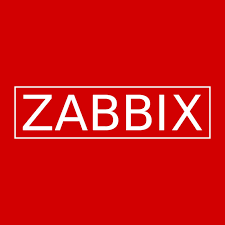Zabbix — Monitoring That Grows With the Infrastructure
Zabbix has been around for years and still stays relevant because it covers a wide field: servers, networks, applications, even cloud resources. It’s not a single-purpose tool — more like a monitoring backbone. Companies that run mixed environments often end up with Zabbix because it connects old hardware with modern workloads in one place.
Why It Matters
Most admins know the problem: one tool checks switches with SNMP, another collects OS metrics, a third sends alerts. Keeping all of them running in sync is painful. Zabbix tries to put order in that chaos. It discovers devices on the network, applies ready-made templates, and starts collecting data without dozens of plugins to manage. For large teams, this means less firefighting and more predictable monitoring.
How It Works
– The Zabbix server runs on Linux with a SQL backend to keep metrics.
– Data comes from many sources: SNMP for routers and switches, agents for servers, IPMI for hardware sensors, JMX for Java apps.
– It builds graphs and dashboards in the web interface and raises triggers when thresholds are passed.
– Notifications can be sent by email, SMS, or pushed into ticketing systems.
Deployment / Installation Guide
– Packages are available for major Linux distros; setup requires a database like MySQL or PostgreSQL.
– Agents exist for Windows, Linux, macOS.
– Templates for databases, web servers, and hardware speed up configuration.
– At scale, proxies can be deployed to offload the main server.
Integrations
– REST API for automation and integration with external tools.
– Connects with Grafana for teams that want more flexible dashboards.
– Hooks for ticketing systems and chat tools like Slack or Teams.
Real-World Applications
– ISPs pulling SNMP data from thousands of routers and switches.
– Enterprises tracking performance across hybrid setups (VMware, bare metal, cloud).
– Teams building SLA reports directly from Zabbix’s data.
– Admins correlating hardware failures with service downtime.
Limitations
– Setup is heavier compared to single-binary tools.
– Database size grows fast if retention is long.
– Scaling requires tuning and sometimes additional proxies.
– UI design feels dated compared to newer platforms.
Snapshot Comparison
| Tool | Role | Strengths | Best Fit |
| Zabbix | NMS + metrics | Templates, discovery, scale | Enterprises with mixed infra |
| Nagios | Monitoring core | Simple checks, plugin ecosystem | Smaller or legacy setups |
| Prometheus | Metrics DB | Pull model, strong ecosystem | Kubernetes and dynamic stacks |
| PRTG | All-in-one tool | Easy to use, sensor-based model | SMBs and mid-size companies |

